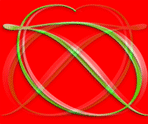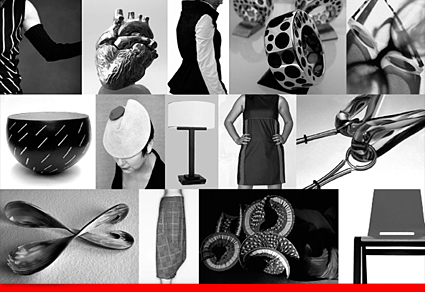
d.sign Plattform versteht sich als Vertretung für Künstler im Bereich der angewandten Kunst. Es werden 2 Ausstellungen pro Jahr kuratiert, in denen innovatives Design aus dem In- und Ausland vorgestellt und der persönliche Kontakt zwischen Designern und Publikum bzw. Produzenten hergestellt wird. Es soll die Möglichkeit geschaffen werden in Ruhe und im richtigen Ambiente herausragende Produkte zu präsentieren und zu erwerben. Im Vordergrund stehen die Qualität des Designs hinsichtlich Formgebung, Materialpräzision, Absatzmöglichkeit, nicht aber alters- oder geschlechtsspezifische Kriterien.
›» Nora Abeska, Pia Maria Bach und Carola Pizzini — [Textiles]

›» Ursi Fürtler — [Schals]

›» Nomi Goldfarb — [Kleiderkreationen]

›» Max Grün — [Ring-King]

›» Felicitas Herold-Graf — [Ibis D’Oro]

›» Renate Hattinger — [Keramik]

›» Robert Horn — [Luxuslederwaren]

›» Walli Jungwirth — [Hüte]

›» MAK Design Shop — [Museum für Angewandte Kunst]

›» Marlene McKibbin — [Acrylic | Stainless Steel, Silver & Gold]

›» Michaela Meissl — [Keramik]

›» Sergej Nikoljski und Michael Schluder — [Architecture]

›» Thomas Petz — [Horn-Manufaktur]

›» Gerlinde Sixt — [Brillen]

›» Josephine Wagner — [Strick, Printz by Josephine]

›» Stefanie Wippel — [Wabi-Sabi Bekleidung]
Hier die Aussteller im Überblick:
d_sign 2007
(application/pdf, 2,656 KB)
designforumMQ | Museumsquartier
Museumsplatz 1, Hof 7 | 1070 Wien
Freitag, 30. November, 14 — 21 Uhr
Samstag, 1. Dezember, 12 — 21 Uhr
Sonntag, 2. Dezember, 12 — 20 Uhr
.
.
.
Dieter Telfser 2007 für Daisy Meek

Das designforumMQ — Verein zur Förderung von österreichischem Design - wurde im Mai 2005, auf Initiative von Design Austria und der Österreichischen Designstiftung gegründet. Das designforumMQ ist zu jeweils 50% von Design Austria, dem Berufs-, Service- und Interessensverband der Designer Österreichs, und der Österreichischen Designstiftung, finanziert. Mit dem designforumMQ entsteht ein Ort des Dialoges zu Fragen rund um das Thema Design und dessen Bedeutung in unserer Informationsgesellschaft. Das Fundament des Designforums bilden etablierte Disziplinen wie Grafik-Design, Multimedia, Produkt- Design sowie Interior-Design. — Das designforumMQ ist ein Dialog-, Kompetenz- und Vermittlungszentrum, dessen Aufgabe darin besteht, laut über Design und dessen Funktion in unserer Zeit nachzudenken. Es versteht sich als ein Ort, der die Möglichkeit bietet, design-relevante Themen für eine breite Öffentlichkeit aufzubereiten und in unterschiedlichen Formen zu thematisieren. Das geschieht über Ausstellungen, Podiumsdiskussionen, Symposien, Vorträge, Konferenzen und Events. — Über diesen mehrdirektionalen Dialog will das Designforum beraten, vernetzen, vermitteln, lernen und bilden.
... Link
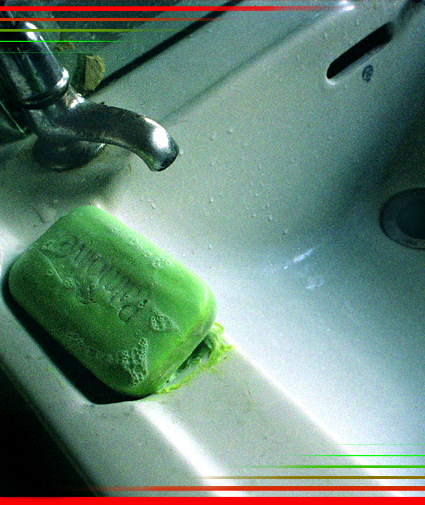
One day there is life. — A man, for example, in the best of health, not even old, with no history of illness. Everything is as it was, as it will always be. He goes from one day to the next, minding his own business, dreaming only of the life that lies before him. And then suddenly it happens there is death. A man lets out a little sigh, he slumps down in his chair, and it is death. The suddenness of it leaves no room for thought, gives the mind no chance to seek out a word that might comfort it. We are left with nothing but death, the irreducible fact of our own mortality. Death after long illness we can accept with resignation. Even accidental death we can ascribe to fate. But for a man to die for no apparent cause, for a man to simply die because he is a man, brings us so close to the invisible boundary between life and death that we no longer know which side we are on. Life becomes death, and it is as if this death has owned this life all along. Death without warning. Which is to say: life stops. And it can stop at any moment. Invisible Boundaries is a collection of just over a thousand images of the space I have lived in for the past 7 years.
The title Invisible Boundaries refers to the notion of serial image making whilst moving around a fixed space. — Here in Invisible Boundaries the home becomes this geometrical reference point a fixed set of parameters which allow the notions of sequence and serialisation to be tested, separated by distinctions of time and date. The project built a sense of place by continually examining these rooms and areas, a pre occupation then with measuring a specific time, [shutter speed] moment against another recording and previous documentation. The objects/rooms are invisible and yet at the same time they are becoming visible photographically and this condition defines them through this accumulation of moments that lend themselves to that which simulates a diary.

Invisible Boundaries has as its practical project a photographic archive of 1200 images that sequentially documents and records my living space by [re-]visiting the same locations, objects, traces and detritus over a period of three years, 1999 to 2002. — This resulted in two major national exhibitions at the Michael Tippet Centre, Bath Spa University 2002 and The Thelma Hulbert Gallery, Honiton 2005. Here photographs from the project Invisible Boundaries were displayed in 27 enlarged photographic images and a CD-ROM of 700 images.
My written dissertation describes and explores the relationship between my various recording methods and the various evocative outcomes produced as an exhibition, where images are visually enlarged, magnified and displayed, and a CD-ROM, where implicit details are archived and revealed in greater scope and magnitude. — Chapters 1 and 2 [The Work and The Archive] explore in detail the photographic collection in my work and explicitly in two major works, Gerhard Richter’s Atlas [2004] and Sol LeWitt’s Autobiography [1980], two large bodies of archived photographic works.
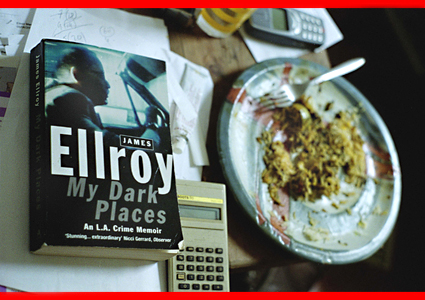
In Chapter 3 The Domestic and Personal, Invisible Boundaries is considered alongside modern documentary practice relative to the home context through the images of Martin Parr, Nan Goldin and Larry Sultan. — Both personal and objective, my thesis specifically analyses the projects Signs of the Times [Parr 1992], The Ballad of Sexual Dependency [Goldin 1982] and Pictures from Home [Sultan 1989]. The practical work allowed for the single image to be taken, stored and reviewed against a larger body of images that formed the archive.
This practical analysis is concluded in Chapter 4, Photographic Fiction and Loss, which draws on the contexts of documentary and archival practice established in my work, where these works become an emotional and nostalgic product. — Throughout all chapters I am interested in the continued dominance of the singular image in contemporary writing at a time when digital technology and culture are making the multiplicity of images prevalent.
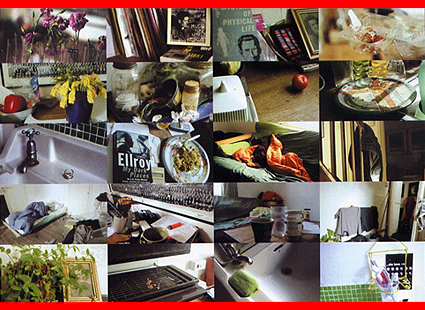
Overall Invisible Boundaries is an in-direct autobiographical and cumulative photographic archive. — Through its continuous photographic recording of the rooms, spaces and items in my home, it shows how the tracings and residues of an existence and the banality of moments, holistically form an archive of historical moments, which also says something about my life.
.
.
.
Dieter Telfser 2007 for Peter Day

Peter Days Invisible Boundaries records and catalogues the objects and artefacts of Day’s home, as well as the ephemeral imprints of time and people passing through it. — Peter Day’s work has been dubbed »anti-photography« or »total photography«, constantly revisiting the same places over and over again. — The minute you start saying of something, »Ah, how beautiful! We must photograph it!« you are already close to the view of the person who thinks that everything that is not photographed is lost, as if it had never existed, and that therefore, in order really to live, you must photograph as much as you can, and to photograph as much as you can you must either live in the most photographable way possible, or else consider photographable every moment of your life. The first course leads to stupidity; the second to madness. — Italo Calvino — The Adventure of a Photographer.
... Link
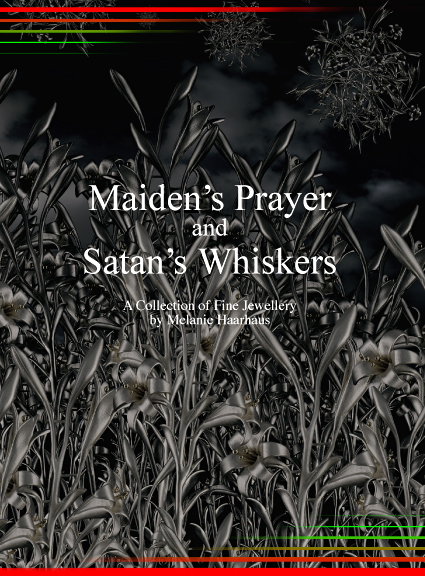
Wir leben in einer Welt der Unübersichtlichkeit. — Jeder Mensch, jedes Ereignis, jedes Ding stellt sich den mannigfaltigen Betrachtern verschieden dar. Mancher Blickwinkel lässt die eine Facette umso heller erstrahlen, ein anderer diese im Schatten verschwinden. Unter dem Druck, ständig rasche, augenblickliche Entscheidungen zu treffen, verliert man zudem die großen, existenziellen Fragen fast aus den Augen. — Es sich anscheinend einfach zu machen, eine klare Unterscheidung zu treffen zwischen Richtig und Falsch, Schwarz und Weiß, Gut und Böse erscheint da wie ein unerhörter Luxus.
Wie etwas, das man sich gar nicht mehr leisten kann. Die Sehnsucht danach hört allerdings nie auf. Dieser Sehnsucht hat Melanie Haarhaus durch die Schmuckstücke ihrer neuen Kollektion »Maiden’s Prayer and Satan’s Whiskers« eine Gestalt verliehen. Sie erzählt eine der ältesten Geschichten des westlichen Kulturkreises, eine Geschichte vom Versuch, das Gute klar vom Bösen zu trennen, und lässt sie in einer anderen Art von Luxus wieder aufleben.

We live in a confusingly complex world. — Every individual, incident or item presents itself in a different manner to different observers. Viewed from one angle a facet may shine all the brighter, while from another it will disappear into the shadows. Under constant pressure to make quick, impulsive decisions we also risk losing sight of the great, existential questions. — Taking the easy way out – clearly differentiating between right and wrong, black and white, good and evil – seems like an outrageous luxury, a luxury we can no longer afford.
And yet we never cease to yearn for it. Melanie Haarhaus has now given this yearning form in the pieces from her new jewellery collection »Maiden’s Prayer and Satan’s Whiskers«. The collection tells one of western culture's oldest stories, a story of the quest to clearly divide good from evil, and makes it come alive in an altogether different kind of luxury.
.
.
.
Dieter Telfser 2007 für © Melanie Haarhaus 2007

Melanie Haarhaus, new collection »Maiden’s Prayer and Satan’s Whiskers« was launched in September 2007. With this jewellery collection the artist sets new standards for her work in several respects. For the first time the pieces created are part of an ensemble, a story is being told. Every single one is a small piece of art, nested in a theme that will never loose its timeliness. In addition to one-of-a-kind pieces, the collection for the first time also includes reproducible items, in strictly limited editions. Every piece has been hand-made with technical perfection by the artist and makes one of western culture's oldest stories come luxuriously alive — the clear division of good from evil...
For Melanie Haarhaus, jewellery design turned out to be the perfect means of expression in many respects. The artist’s fascination with miniatures and the obscure beneath the obvious, as well as the desire to make reality look less grue some by converting it into something beautiful. — Traditional crafts meet an Oscar Wildesque view of beauty and an affinity for fine details. An attempt to transfer the classic into modernity without loosing contact to the technical roots. Characteristic for her jewellery are handmade one-of-a-kinds, sometimes combining vintage elements with her own designs, always focusing on high quality technical craftsmanship.
... Link
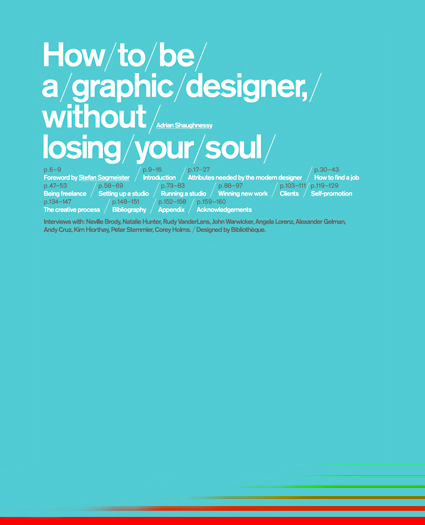
Adrian Shaughnessy Speaks Up: an Interview by Jason A. Tselentis
Oder So finden Sie Ihren Weg als Grafikdesigner via Steibner | München
.
.
.
Dieter Telfser 2007

Adrian Shaughnessy is a self-taught graphic designer. Until recently he was creative director of »Intro«, the London-based design company he co-founded. He left in 2004 to pursue an interest in writing and consultancy, and is currently consultant creative director of »This is Real Art«, a »virtual« design company. Shaughnessy has written three books on design for music — the Sampler series — and edited a book of Intro work. He writes for many of the leading design publications, and is a contributor to Design Observer and The Wire. He lectures extensively around the world, and in January 2006 he was appointed editor of a forthcoming magazine devoted to illustration. — Adrian Shaughnessy war Mitbegründer der führenden Londoner Designfirma »Intro« und fünfzehn Jahre lang Creative Director des Studios, bis er die Firma 2004 verließ, um als Designautor, Art Director und Berater zu arbeiten. Zur Zeit ist er Creative Director bei »This is Real Art«.
... Link
| April 2025 | ||||||
|---|---|---|---|---|---|---|
| Sun | Mon | Tue | Wed | Thu | Fri | Sat |
| 1 | 2 | 3 | 4 | 5 | ||
| 6 | 7 | 8 | 9 | 10 | 11 | 12 |
| 13 | 14 | 15 | 16 | 17 | 18 | 19 |
| 20 | 21 | 22 | 23 | 24 | 25 | 26 |
| 27 | 28 | 29 | 30 | |||
| August | ||||||
The era of spatial computing is there! Blending digital content seamlessly...
so betrachtet, das Aufblitzen des transnormativ »Guten.« – Es...
— Canva acquires design platform Affinity to bring professional design tools...
James Cuda unveils its revolutionary new animation tools at »We Are Playgrounds«...
Realitäten in der Organisation von dezentralisierten Strukturen. Über die fast...
Generate Creative Generative AI Models at the speed of your...
EG. Offene Objekt Orientierte Managementkultur, so lange die Farben noch...
of structure! — Challenging design paths — Beyond the obvious....
Aussichten auf Glut! — Warum es wenig Sinn macht, die...
Puredistance No.12 completes the Magnificent XII Collection. — 12 noble...
